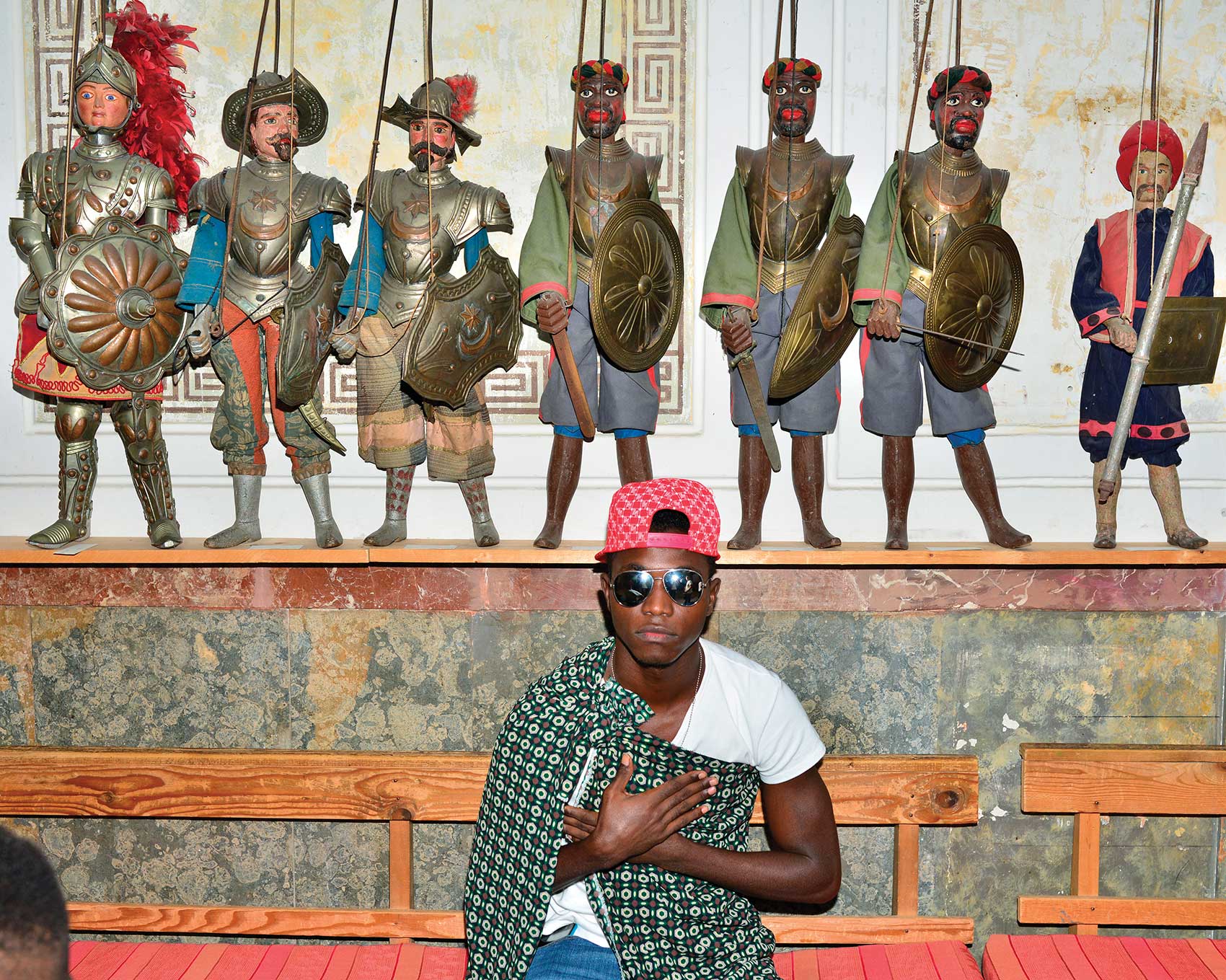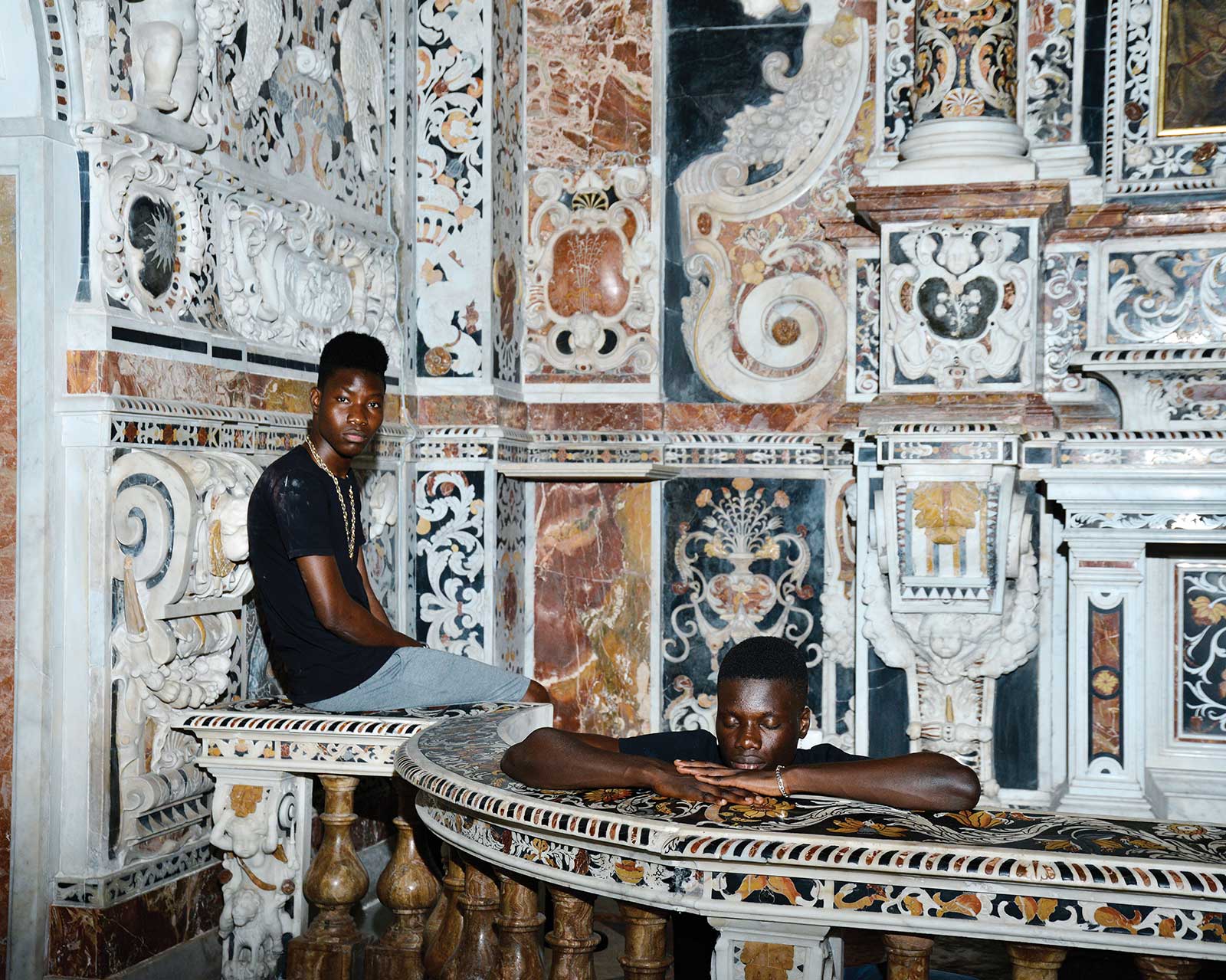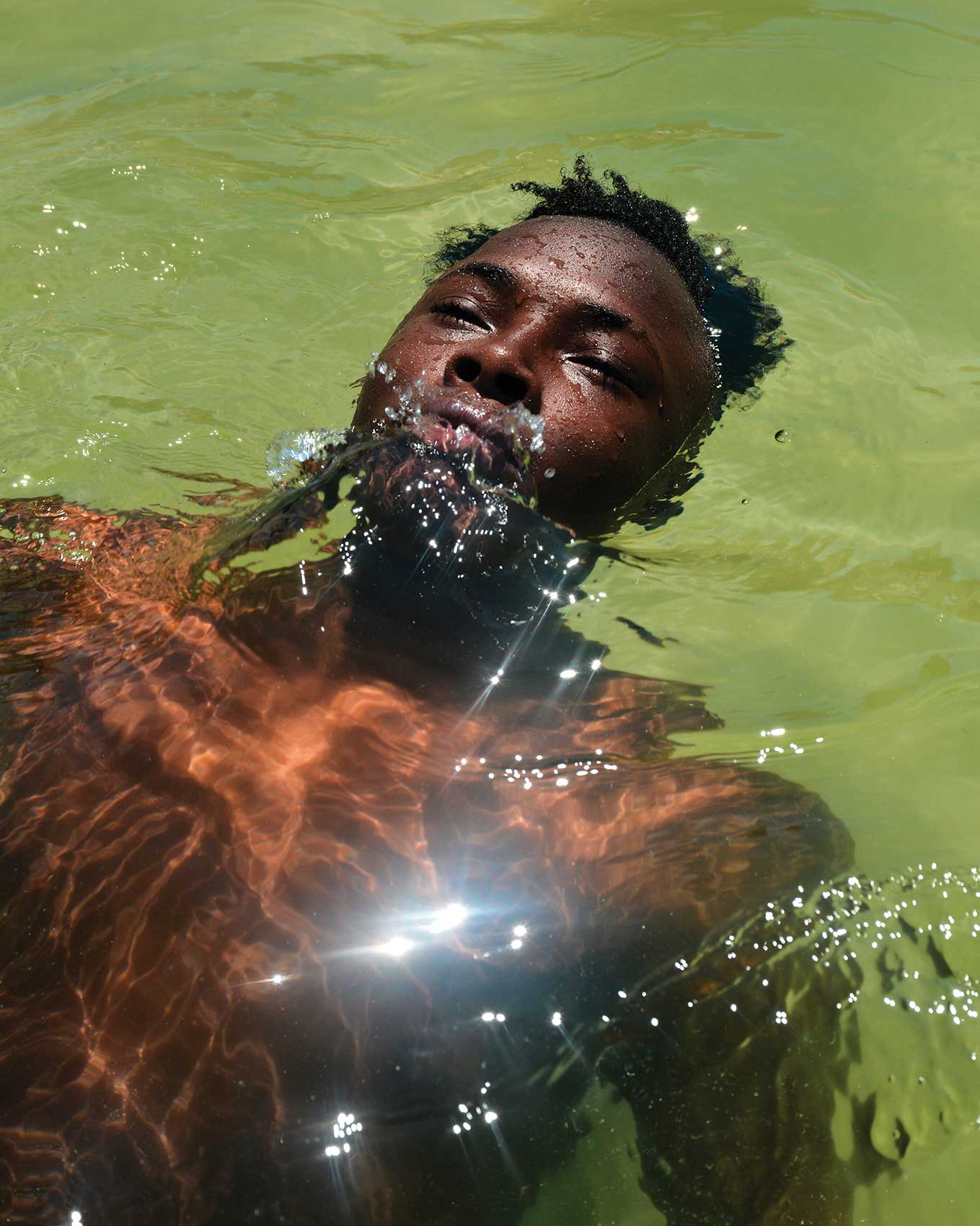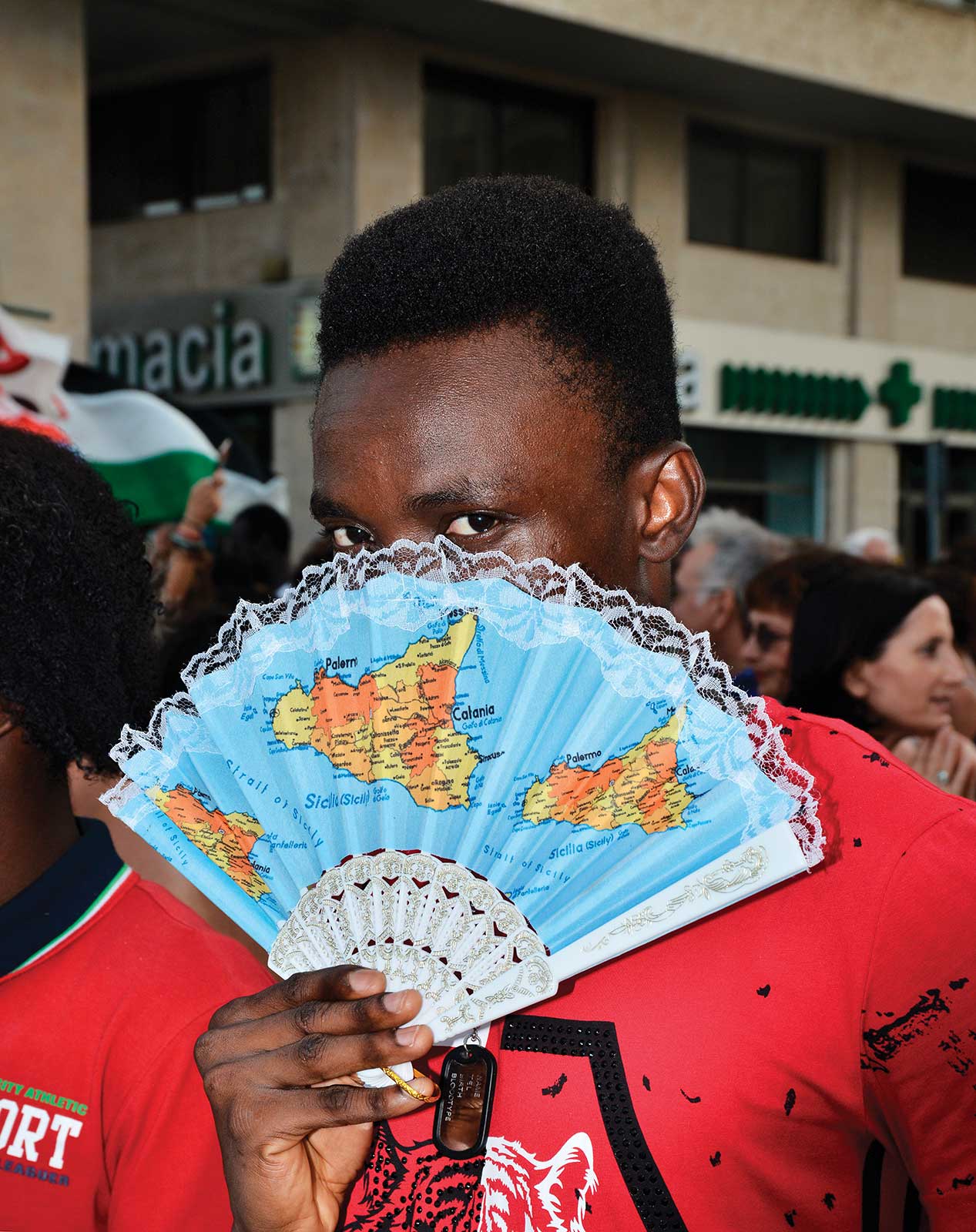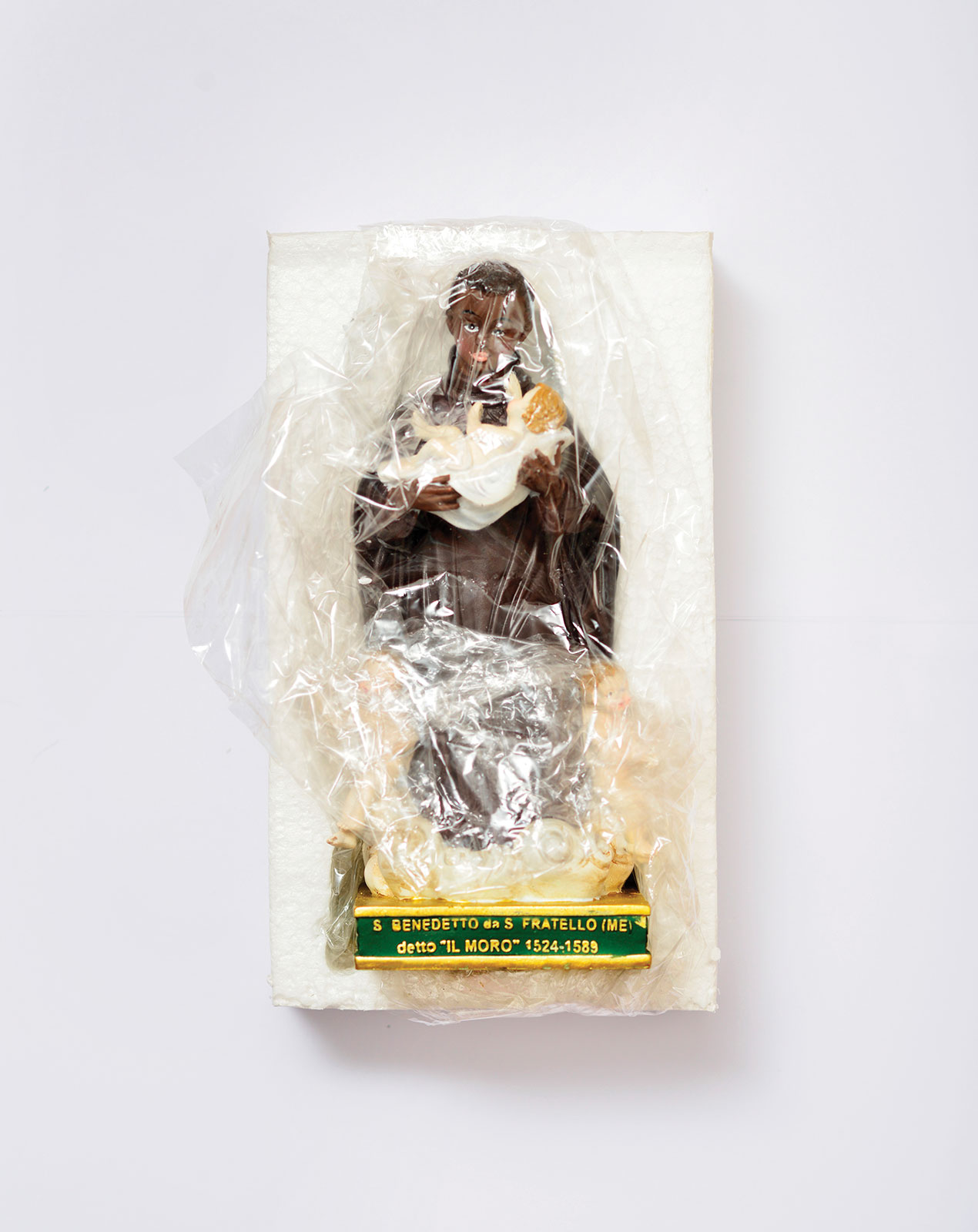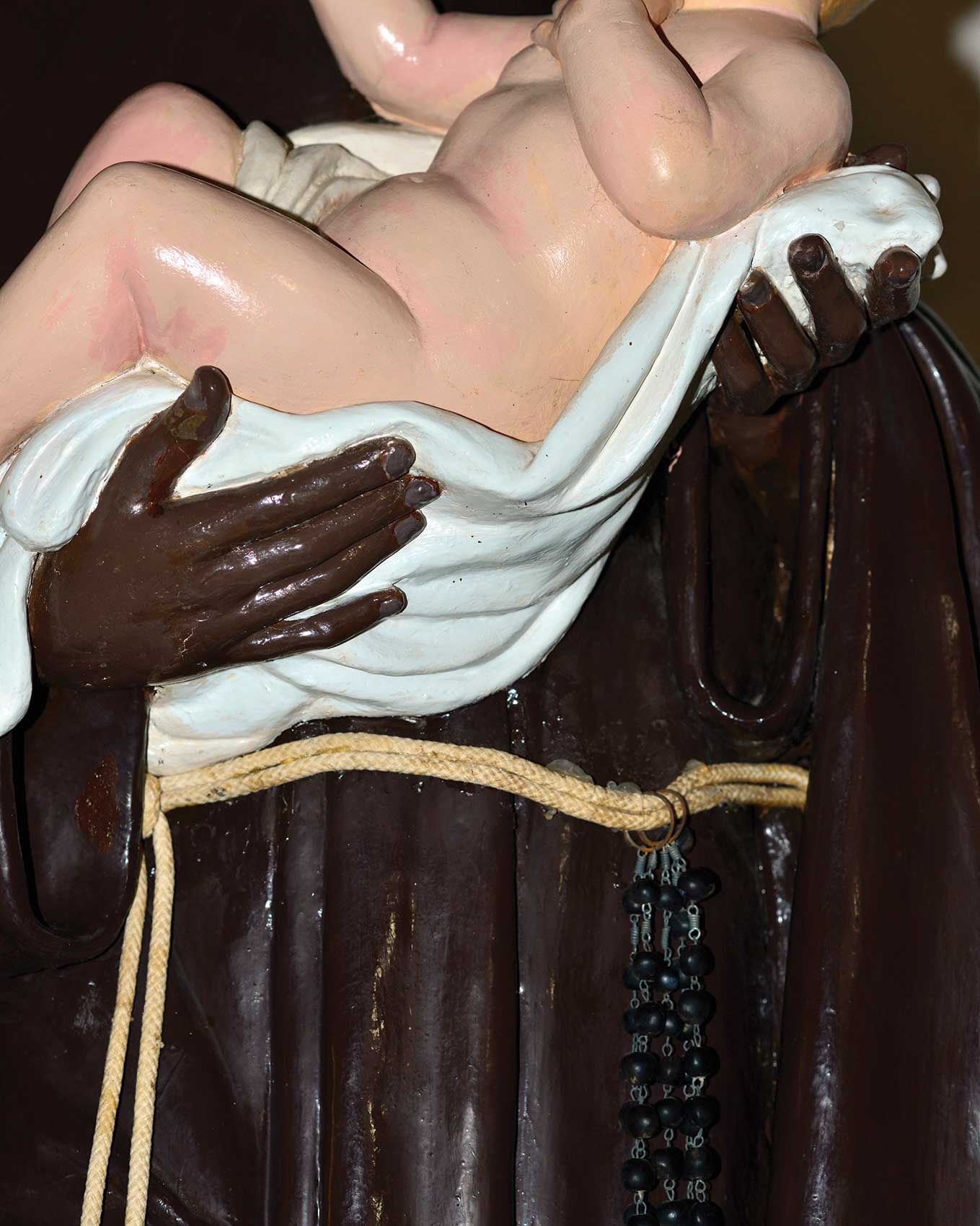Binidittu
Nicola Lo Calzo & Daisy Lafarge
It’s perhaps a truism that acts of devotion both make and unmake the devotional object. Over centuries, pilgrims’ gestures of love – stroking and kissing – infinitesimally erode statues and relics representative of the divine. In seeking transcendence the devotee reinforces the object’s transience, a paradox that reveals attention as a physical force. Love is a tarnish; no object is left unmarked by the state of being adored. In Christian Europe the furies of iconoclasm left an indelible question mark over attempts to represent the divine. One further ambiguity might be likened to a devotional mirror stage: how important is it that in representations of the sacred we are able to glimpse something of ourselves?
Set in Sicily and spread across its streets, sacred spaces and sites of marginalised labour, Italian photographer Nicola Lo Calzo’s Binidittu project grapples with these issues of recognition and representation. Portraits of mostly young black men – some from West Africa seeking asylum in Europe, others the children of an earlier generation of migrants – are set against the devotional context of Benedetto the Moor, a sixteenth-century Afro-Sicilian who became the first black saint. While some of Lo Calzo’s images play directly with hagiography, framing these young men as saintly icons, others orbit Benedetto’s diasporic legacy by way of mass-produced souvenirs, and traces of his veneration in Sicilian streets and buildings. Binidittu continues Lo Calzo’s project of documenting the African diaspora around the world, and his draw to Sicily is understandable: the island and its capital Palermo have long functioned as the crossroads of Europe and Africa, pivotal in the flux of people and trade from slavery to present-day migration.
Born to enslaved parents around 1526 and declared free at birth, Benedetto Manasseri was a priest and healer who bore the name of the Sicilian family that owned his father. He grew up to become a pastor and later joined a Franciscan convent where he preached, healed the sick and worked as a cook until his death in 1589. In the following centuries Benedetto became a hugely popular figure, not only in Sicily but also across Europe and South America, where his devotional cult was spread by Spanish and Portuguese colonialists. While Benedetto’s blackness has been a cause for celebrity in Latin America, his native Sicily tells a different story. In the rising tensions around slavery in the eighteenth century, Benedetto’s ethnicity was seen as too politically charged, resulting in the longest canonisation debate in history. His sainthood was eventually confirmed in 1807, the same year that slavery was abolished in Britain.
The whitewashing of Benedetto took a number of forms. His status as Sicily’s patron saint was supplanted by the twelfth-century St Rosalia, and a pink-white Christ child was introduced to depictions of the black saint. While St Rosalia still dominates Sicily today, the Confraternity of Benedetto il Moro boasts 140 members devoted to the saint’s processions, relics and feast days. At first it is immensely heartening to see Lo Calzo’s images of white Sicilian men venerating the figure of a black man. But the interviews collected for the project indicate something more sinister; many of these men do not believe that Benedetto was ethnically ‘black’, and definitely not black like the many young migrant men in Sicily’s towns.
This dissonant exceptionalism is nothing new in the history of the Church. In her lucid book on the myth and cult of the Virgin Mary, Alone of All Her Sex, Marina Warner writes of the fierce debate around the tradition of black Madonnas, and how explanations other than race have been sought to justify their existence. While many suggest that these figures were simply carved from ebony, rendering any ethnic resemblance coincidental, others suggest that the Madonnas ‘blackened’ over time by exposure to the smoke from votive candles. Yet neither of these theories can be easily disentangled from medieval Christianity’s fraught relationship with race, where blackness was often viewed in allegorical terms drawn from passages in the Song of Songs. The famed twelfth-century ‘love letters’ of Abelard and Héloïse contain a lengthy passage from Abelard concerning the blackness of Moses’ Ethiopian wife; for Abelard, the black woman’s outer ‘affliction’ made her all the ‘purer’ within, and suggests this correlated to heightened sexual pleasure for her husband. Blackness, Abelard wrote, kept Moses’ wife ‘humble and abject in this life so that she may be exalted in the next’. Similarly, Warner iterates that despite Catholicism’s association of blackness with the devil and the occult, ‘Black Madonnas are considered especially wonder-working, as the possessors of hermetic knowledge and power.’
This twinning of reification and disavowal leads to a contradictory state of hyper-visible invisibility. ‘I am overdetermined from the outside,’ Frantz Fanon wrote, ‘I am a slave not to the “idea” others have of me, but to my appearance.’ The images of Binidittu brush up against such states of fragile recognition, but are careful not to linger too long. Instead Lo Calzo follows his young male subjects from urban streets to the countryside, where many of them work al campo harvesting olives. The lived conditions of seasonal labour are cramped and difficult; most camps lack shower facilities and men often sleep four to a one-man tent. While the UN and NGOs have denounced this kind of labour as ‘modern slavery’, the workers stay because what they can earn in a day is better than in the city, where work is scarce and wages are biased against them. The Sicily Lo Calzo depicts is rife with tension, struggle and dislocation, but not without hope. One photograph documents a giant mural of Benedetto that was supported by the Antirazzista, one of many local groups working to combat racism and promote integration. Unlike the Benedetto figurines manufactured in China then shipped back to Italy, in this mural no white Christ child has been thrust into Benedetto’s hands in an attempt to dilute his blackness.
The portraits of Binidittu reflect the historical valency of Benedetto’s blackness, and its contemporary recalibration in the context of migration and rising populist sentiment. Weighed against the Sicilians who disbelieve Benedetto’s ethnicity are a growing number of organisations and individuals to whom Benedetto symbolises hope and possibility. Among them is Friar Dieudonné Benedetto, an Ivorian who came to Sicily by boat and encountered the story of Benedetto while living in a migrant centre. In an unreservedly dramatic composition, the friar clasps his hands together and gazes up, as if at the source of divine illumination. Dieudonné tells Lo Calzo that he took Benedetto’s name because he felt the saint was his guide in life, and that his friar’s tunic protects him from the invisibility suffered by his migrant brothers. For many Sicilians images of Benedetto may fade into the background of everyday life, but for the undocumented lives of those working al campo, the veneration of a black man born to slaves represents nothing short of a revolution.
All photographs © Nicola Lo Calzo




